Back in 2020, I tested the original MiRider ONE and came away impressed by the compact folder with its fizzy rear hub motor – giving it a very strong four out of five stars.
I continued to ride it throughout most of last year, despite commuting being off the cards, and it became my go-to-bike for short trips to grab essentials from the local shops.
So I was excited to test the latest version of the MiRider One which has seen updates to the motor’s torque, a drop in weight of over 1.5kg, and a change of wheels, tyres and grips to improve performance and weight.
MiRider ONE key changes
- More than 1.5kg weight saved compared to previous model – was 18.7kg, now 17.2kg
- Increase in torque
- New lighter weight, alloy rimmed and traditionally spoked wheels
- 1.95in slick tyres changed to 1.75in Schwalbe Road cruisers
- New ergonomic grips
MiRider One 2021 updates
After putting in more than 300 miles of testing into the previous model, I provided some feedback to MiRider on a few niggles I had with the bike.
In particular, I concluded that the bike would be improved by a reduction in weight – at 18.7kg it was a bit weighty to carry any real distance.
I also thought the skinny lock-on grips were a bit uncomfortable if you spent more than 30 minutes riding, and the saddle’s big profile with its plush, squishy padding wasn’t to my liking either.
And, while the fat 2.5in slick tyres worked well, they did seem a bit like overkill for a bike with an air shock.
The great news is that MiRider took all this on board, and as well as making a number of changes under the skin of the bike, this latest version sees a reduction in weight from 18.7kg to 17.2kg (replete with folding pedals, lights and mudguards), which is impressive for a bike of this type.
While they looked super-cool, the six-spoke cast magnesium wheels of the previous model didn’t exactly help on the scales. So new lighter weight, alloy rimmed, traditionally laced spoked wheels are now specced.
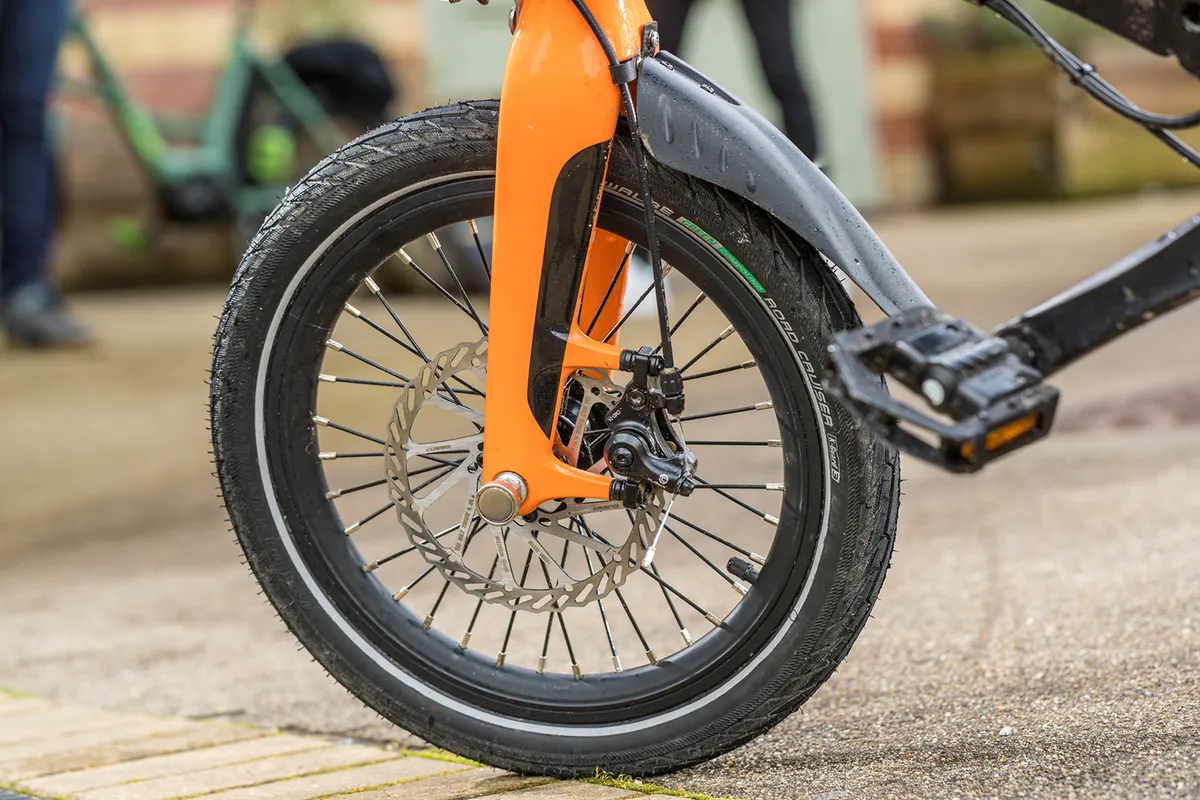
The super-fat slicks have been switched too, for narrower Schwalbe Road cruisers, which are made from a compound that's claimed to be faster rolling.
The hard lock-on grips have also been dropped in favour of some smartly shaped ergonomic grips. They’re well suited to a bike that does place a lot of your weight on the bar, and I can confirm the bike is significantly more comfortable on the hands than the previous model.
MiRider ONE (2021) details
The beauty of the One’s design is its adjustability, which fits a range of rider heights from 5ft to 6ft 4in. It’s able to fit so many rider sizes because of its adjustable telescopic bar/steerer and telescopic seatpost, which features a rather clever flip-lever lock-out.
In my household, heights range from 5ft to 6ft 2in, and it’s worked well for both of us sharing the bike. If you’re taller than 6ft 4in, MiRider offers a longer seatpost as an option.
The box section frame remains the same as the previous model, as does the boxy rear swingarm. The swingarm is anchored above the chainset.
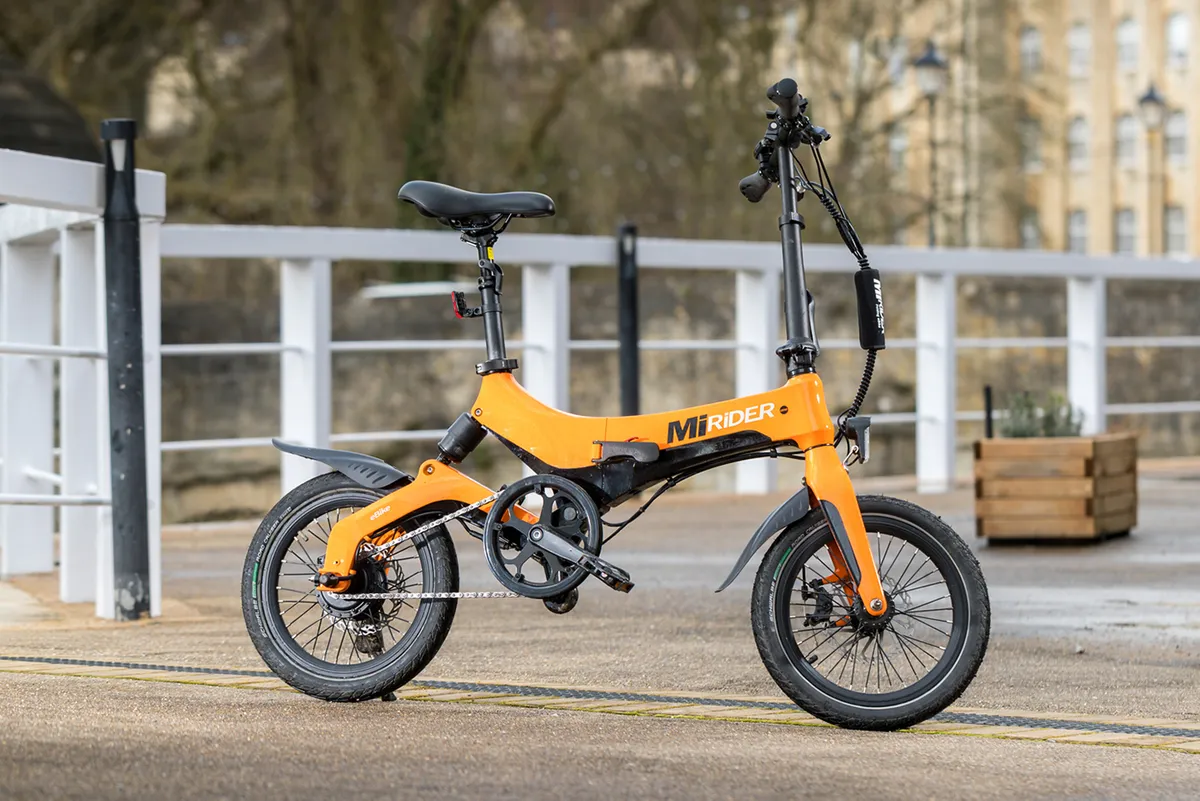
The bike is based on a unified-rear-triangle (URT) suspension design. This sees the crankset integrated into the rear triangle and means that the suspension only 'works' when you're sat on the bike because your feet aren't sprung.
This was a popular design on early full-suspension mountain bikes, though fell out of favour as the understanding of suspension kinematics and technology moved on.
The design presents less of a compromise on a folding bike, though – the rear suspension is simply there to provide comfort, rather than provide exceptional off-road handling.
A URT design also makes it possible to run the bike with a singlespeed or hub-gear drivetrain because the chain tension remains constant, whereas typical suspension systems require a chain tensioner.
Like the original, the 2021 model is assembled to order in the UK and I’ve been impressed with the attention to detail, such as a neoprene cable tidy that wraps the cables together so they don’t get in the way of the fold.
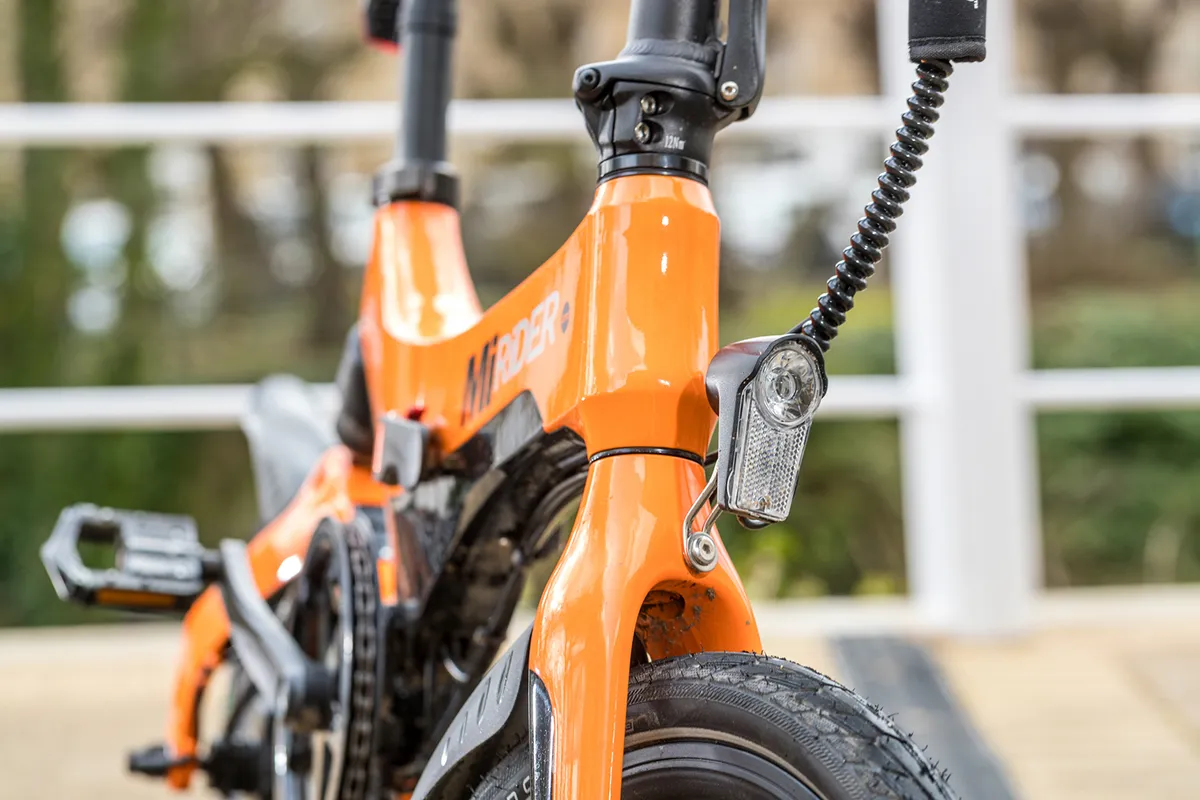
The included accessories are a great touch too, including a front light that’s activated by the system’s LCD head unit, and integrated mudguards that do a great job of keeping road spray at bay.
Lots of the MiRider’s rivals charge extra for equipment like this – Brompton, Dahon and GoCycle should take note.
MiRider ONE (2021) folding technique
Once folded, the bike measures 770mm x 430mm x 680mm with the bar and seatpost on their lowest settings, compared to 1,340mm x 575mm x 1,100mm unfolded.
The fold is as simple as it gets with a large central hinge and a safety lock that halves the bike’s length. The folded bike is secured via a pair of magnets on the front dropout (axle) and the rear. It’s then a case of folding down the bars, lowering the telescopic seatpost and tidying away any cables.
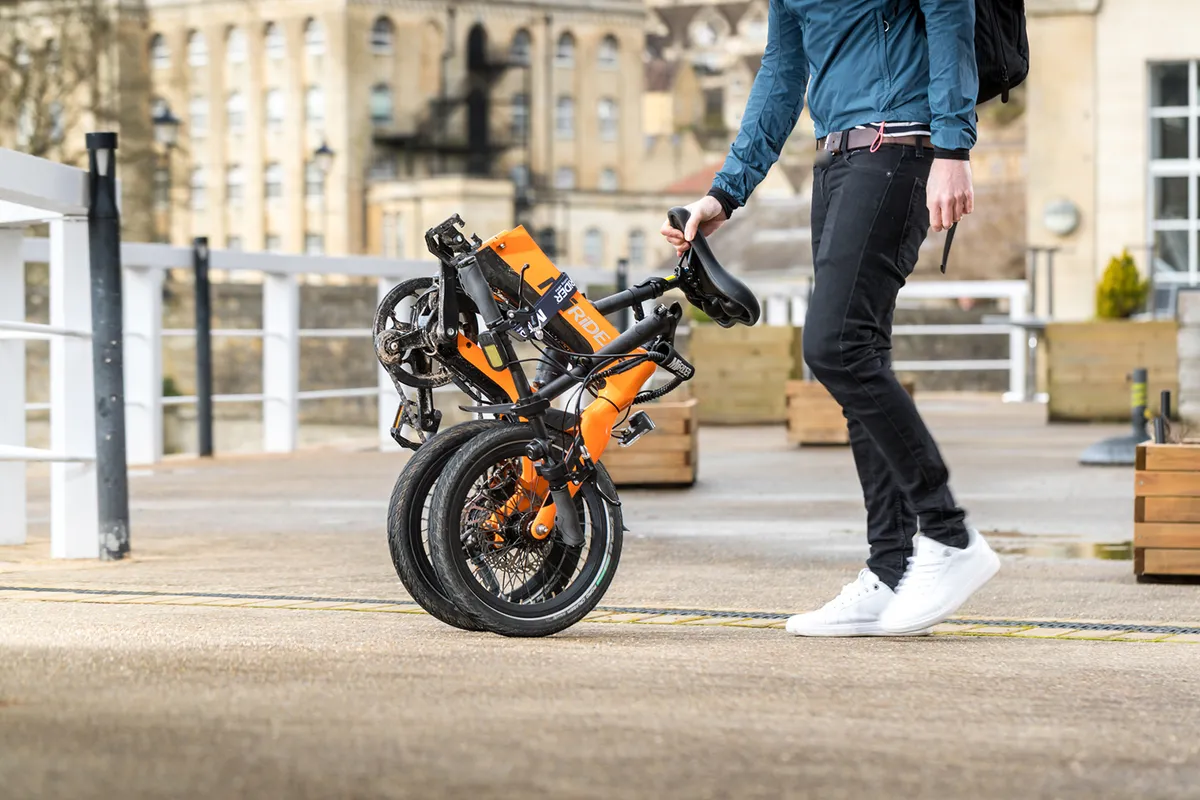
The 17.2kg all-up weight still takes a bit of lifting, but I like the new quick strap that secures the folding bike together without relying solely on the magnetic closure to stop it from unfolding while portaging.
Underneath the bottom bracket is a single urethane skate wheel that sits proud of the chainring to allow the bike to be easily manoeuvred when folded – you can even ‘trolley’ the folded bike by the seatpost.
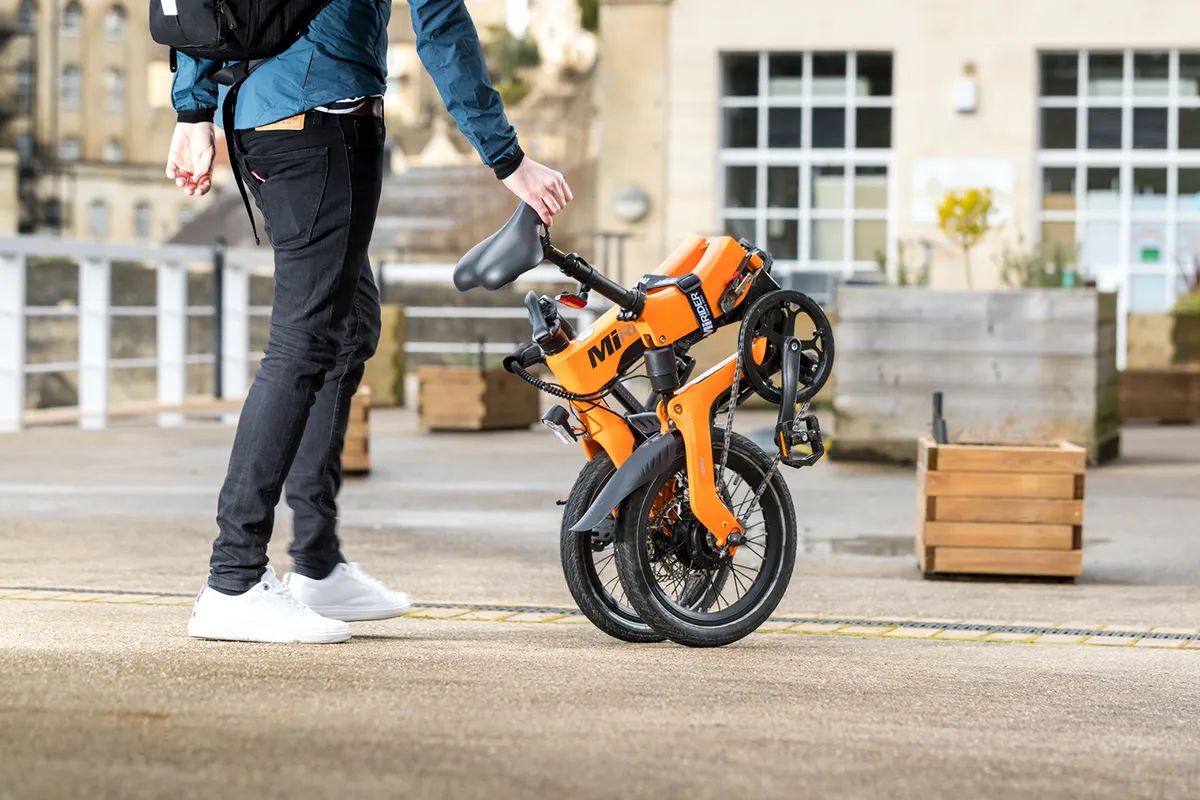
The fold is very quick and clean, and your hands don’t get near any of the bike’s mucky bits. Folding or unfolding takes less than a minute, which makes it ideal for mixed-mode commutes.
MiRider ONE (2021) motor and gearing
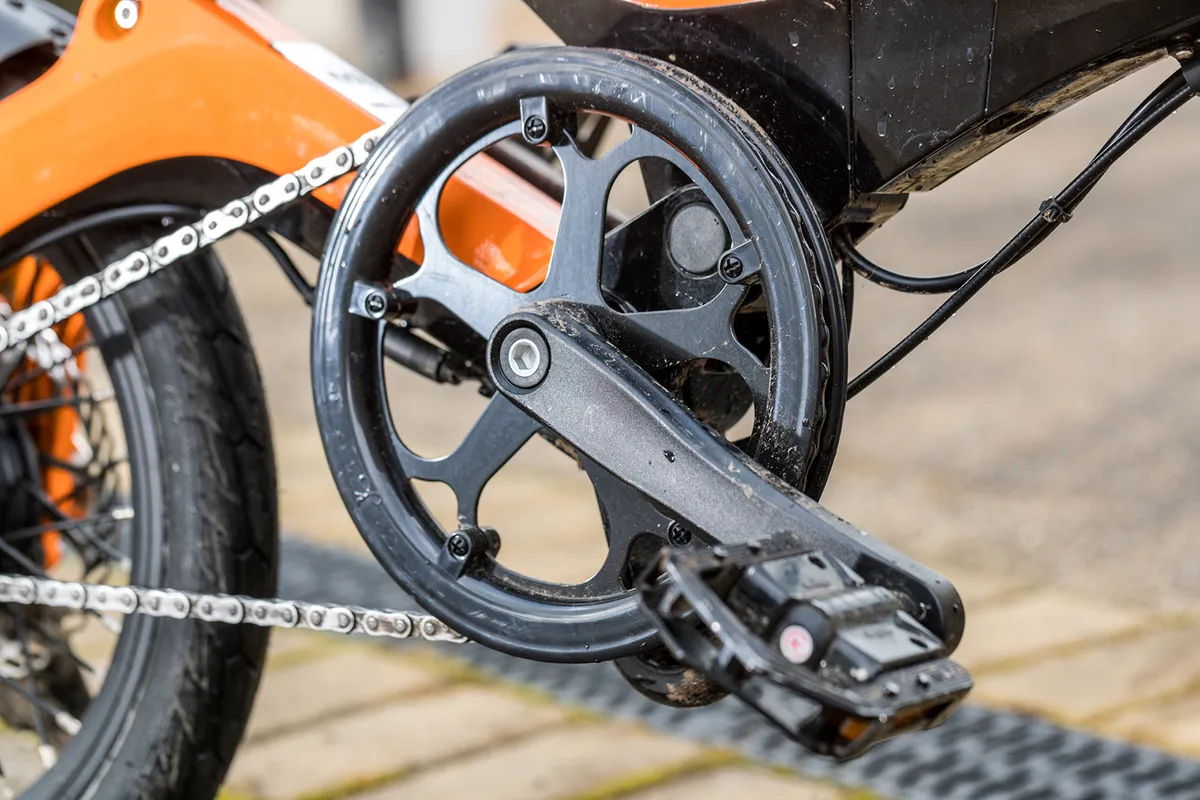
The rear hub motor still offers 250w of assistance, but compared to the original, the latest model sees a jump in torque. MiRider doesn’t state the exact torque figure, but compared to the previous version it certainly packs more punch.
Next to the right-hand brake lever is a large thumb-activated lever, which is the power boost trigger.
This adds power assistance from a standing start to 4.5mph without pedalling. Once you reach 4.5mph, the assistance will switch to a turbo-like boost up to the legal limit of 15.5mph / 25.5kph in the UK.
That means this unassuming little folder will keep up with traffic straight off the lights (at least until 15mph), and zipping through traffic on the MiRider is a blast.
The trigger not only comes in handy in traffic but adds a helpful boost on any sort of incline.
For example, my test rides took in urban traffic as well as a few short, steep climbs that included one rise a mile long with a constantly changing gradient and a section that rises above 14 per cent.
Usually, on a bike with just one gear, this kind of gradient would involve a standing, bar-wrenching effort, but on the MiRider you can use the boost trigger to get your pace and cadence where you need it to tackle a tricky gradient ‘hump’.
The gearing on the 16in-wheeled machine is a 48-tooth chainring paired with a 14-tooth sprocket, which equates to a 49in gear. That’s quite ‘spinny’ for more seasoned cyclists but it’s nice and easy to turn if you’re more of a leisure rider. A bike like this isn’t designed to challenge riders, so I approve of the choice.
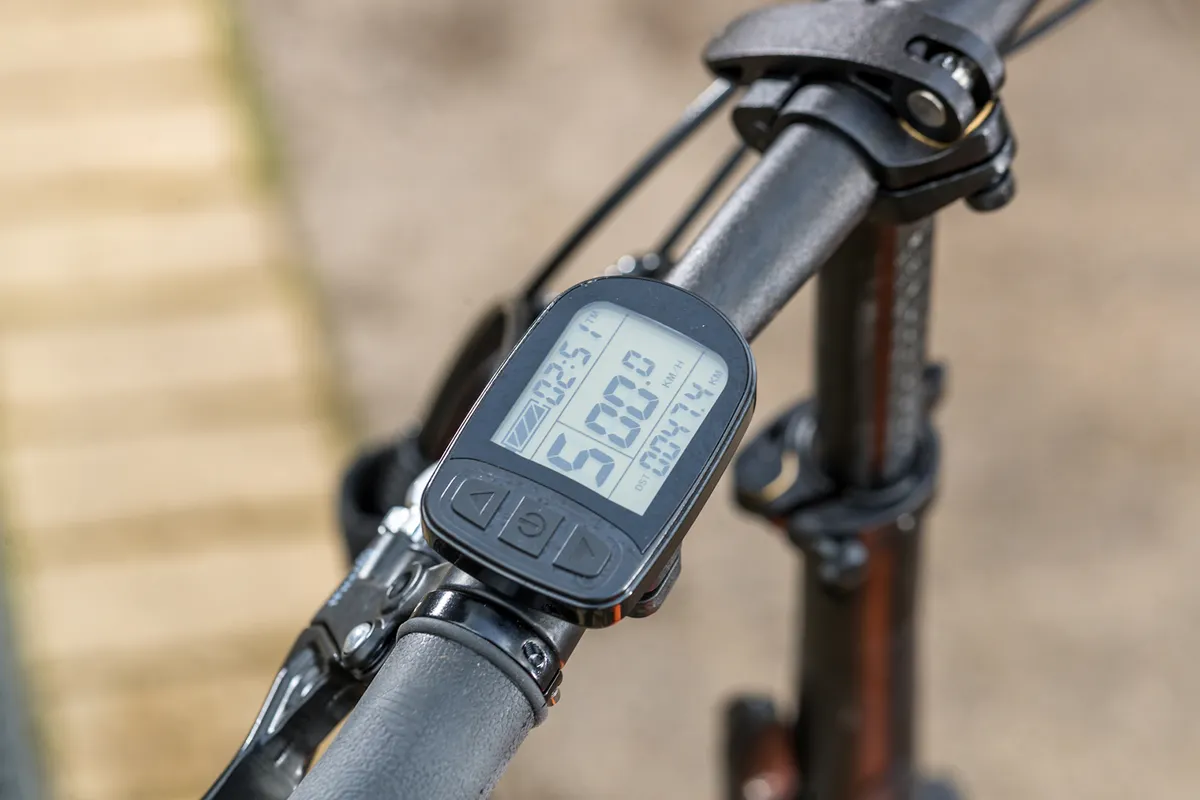
The bar-mounted LCD head unit displays the odometer, time, current speed, and has the functionality to switch between five different power levels via simple up and down switches, as well as switch on the integrated front light by pressing and holding the up switch.
MiRider One (2021) ride impressions
The range impressed and I achieved a max of 45.64 miles compared to MiRider’s claim of 40 miles. At best, I managed 1,797ft of elevation, though that involved lots of switching between the five modes and riding solely on tarmac. On more mixed-mode riding, such as towpaths and trails as well as tarmac, the range dropped down to 25 miles.
As ever, ebike range is very dependent on how you use the system, rider weight, topography and weather conditions.
If you ride the MiRider within the power assistance band, as you would if you wanted to ride to work without breaking a sweat, the range dropped significantly to around 15 to 20 miles.
However, this isn’t much of an issue because the charger is so compact – 135mm x 65mm x 30mm – so it’s easy to stuff into a bag for charging at work. The battery simply clips out of the main frame and can be charged to full capacity in just two and a half hours, so any range anxieties can be put aside.
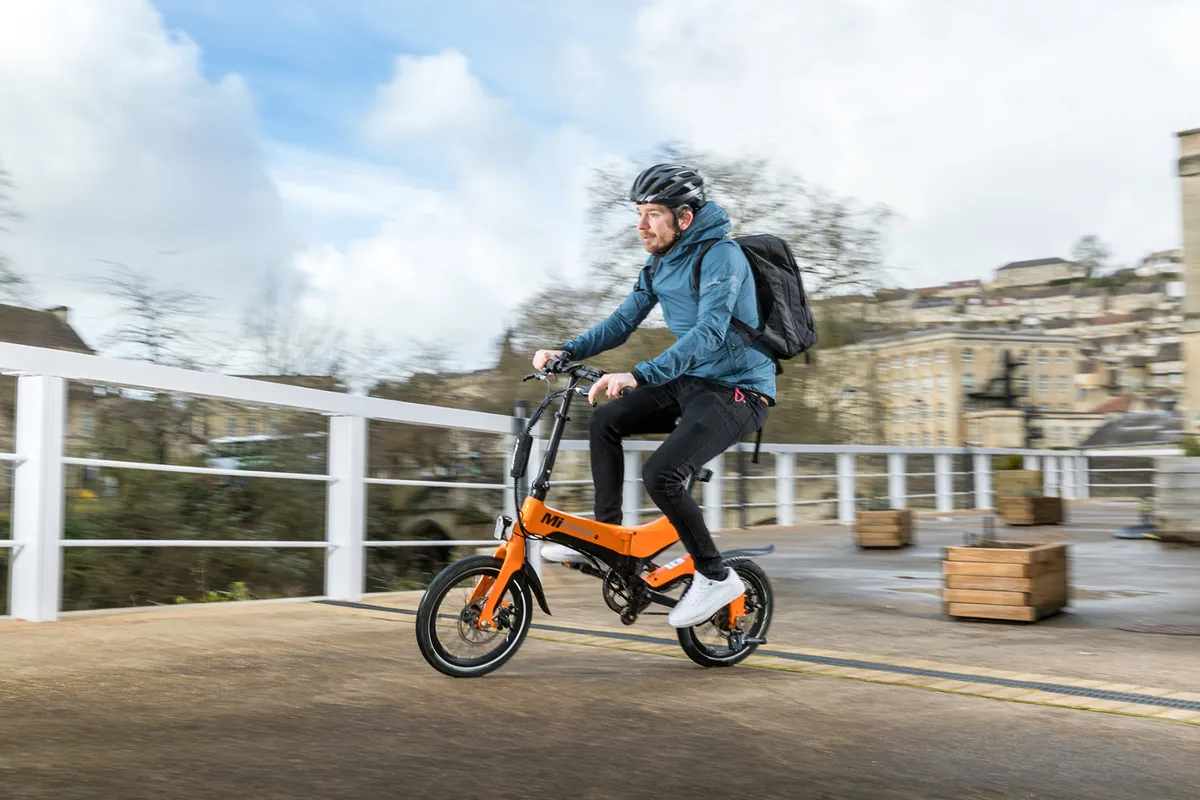
The MiRider One is a lot of fun to ride. It’s quite short and the head angle is pretty upright, which makes the handling fast and ideal for negotiating tight urban spaces. Don’t expect it to descend like a pro, though – it’s just not that kind of bike.
I’m still not a fan of the big squishy saddle, but plenty of others who tried it liked it.
The new MiRider may not look quite as cool without its mag spoked wheels but it’s a heap lighter and the motor is noticeably punchier. It still folds well, too.
The singlespeed drivetrain of the bike might frustrate some cyclists, but if you get into the groove of the MiRider One being a handy form of urban transportation, it’s a great little machine.
MiRider One (2021) bottom line
Is it perfect? Not yet. The lighter wheels mean you need a pump with a flexi hose because there isn’t much room for a track pump head – anyone who’s tried to inflate kids’ bike tyres will know the frustration – and I’d still like to see a geared option, and even more weight lost. However, it is a lot of fun and one of the best value folding ebikes available right now.
Product
| Brand | Mirider |
| Price | £1395.00 |
| Weight | 17g |
Features
| Fork | Alloy |
| Frame | Magnesium Alloy with rear air-shock suspension |
| Motor | 36v 5.2ah Lithium-ION cells by LG rear hub 250w motor, 5 mode LCD display, and power throttle |
| Tyres | Schwalbe Green compound Road cruiser tyres with sealant filled inner tubes |
| Brakes | Clark’s CMD24 Disc brakes with Wuxing brake levers |
| Saddle | Unbranded gel saddle |
| Wheels | Alloy spoked wheels |
| Seatpost | Adjustable |
| Grips/tape | MiRider ergo grips |
| Available sizes | One Size |
| Features | Gears: Single speed 48/14 Pedals: Wellgo F265 alloy folding pedals Accessories: Front LED light; Kickstand; Mudguards (front and rear) |

